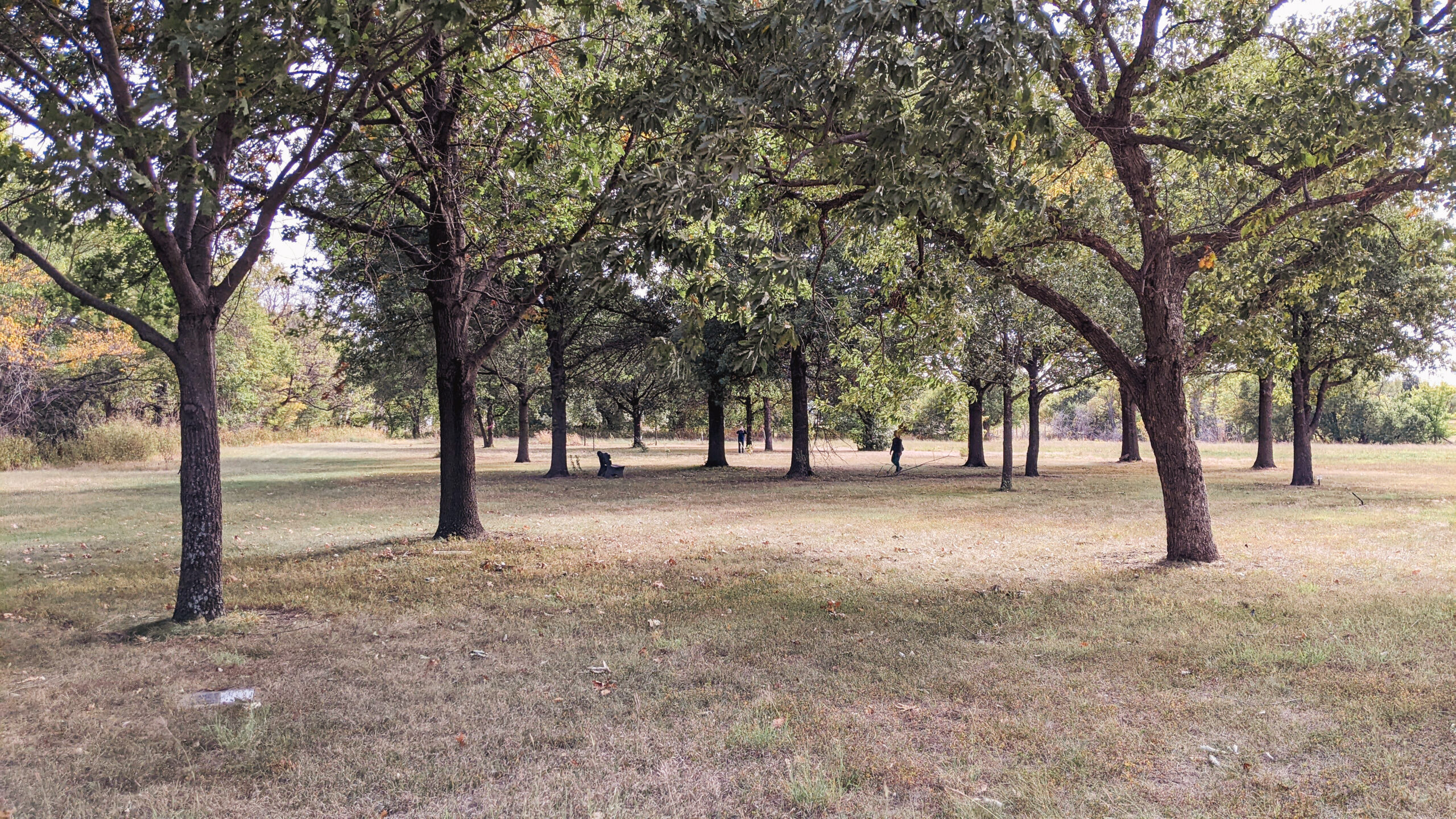Establishing the Kansas Landscape Arboretum
During the planning and construction of Milford Lake in 1960, Bill Flynn, a nurseryman from Abilene, and L. R. Quinlan, a Kansas State University Landscape Architecture professor, saw an opportunity to create an arboretum in Kansas. The two men began discussions with the U.S. Army Corps of Engineers, who were constructing Milford Lake. The Corps of Engineers agreed to lease 192 acres on the west edge of the lake for an arboretum. Today, that land is the Kansas Landscape Arboretum.
Flynn and Quinlan developed planting plans for the arboretum, of which only a portion were realized. The original plans included a variety of tree collections that featured native and exotic species. Of the tree collections originally planted, the most visited was the flowering crabapple collection. This collection boasted over 35 varieties, and visitors would flock to see its seasonal colors and to study the various cultivars.

The Flood of 1993
Unfortunately, many of the arboretum’s original trees were destroyed in the flood of 1993. During the flood, Milford lake’s water level significantly rose and drowned many of the arboretum’s trees including the original flowering crabapple collection. The unprecedented flood set back much of the work that Flynn and Quinlan had accomplished. Since the flood, efforts have been made to re-establish the lost and unplanted collections.

Re-establishing the Tree Collections
A grant was awarded to the arboretum by the Deft Company to help replant the flowering crabapple collection. Becky Keim and Jill Hodson, then a high school sophomore and the arboretum’s general manager, wrote the grant proposal. Matching funds and in-kind contributions for the grant were organized by Jerry Patterson, who was the Kansas Landscape Arboretum treasurer at the time. Due to their collective efforts, the new flowering crabapple tree collection includes over 25 varieties.

To prevent future loss of trees to flood events, new tree collection sites have been positioned above the flood plain in good quality soil. As funds are raised and trees donated, the tree collections are slowly being rebuilt and realized. Through the help of volunteers and donors, it is the hope that Quinlan and Flynn’s vision can come to fruition, and the Kansas Landscape Arboretum can become a major recreational and educational attraction.

